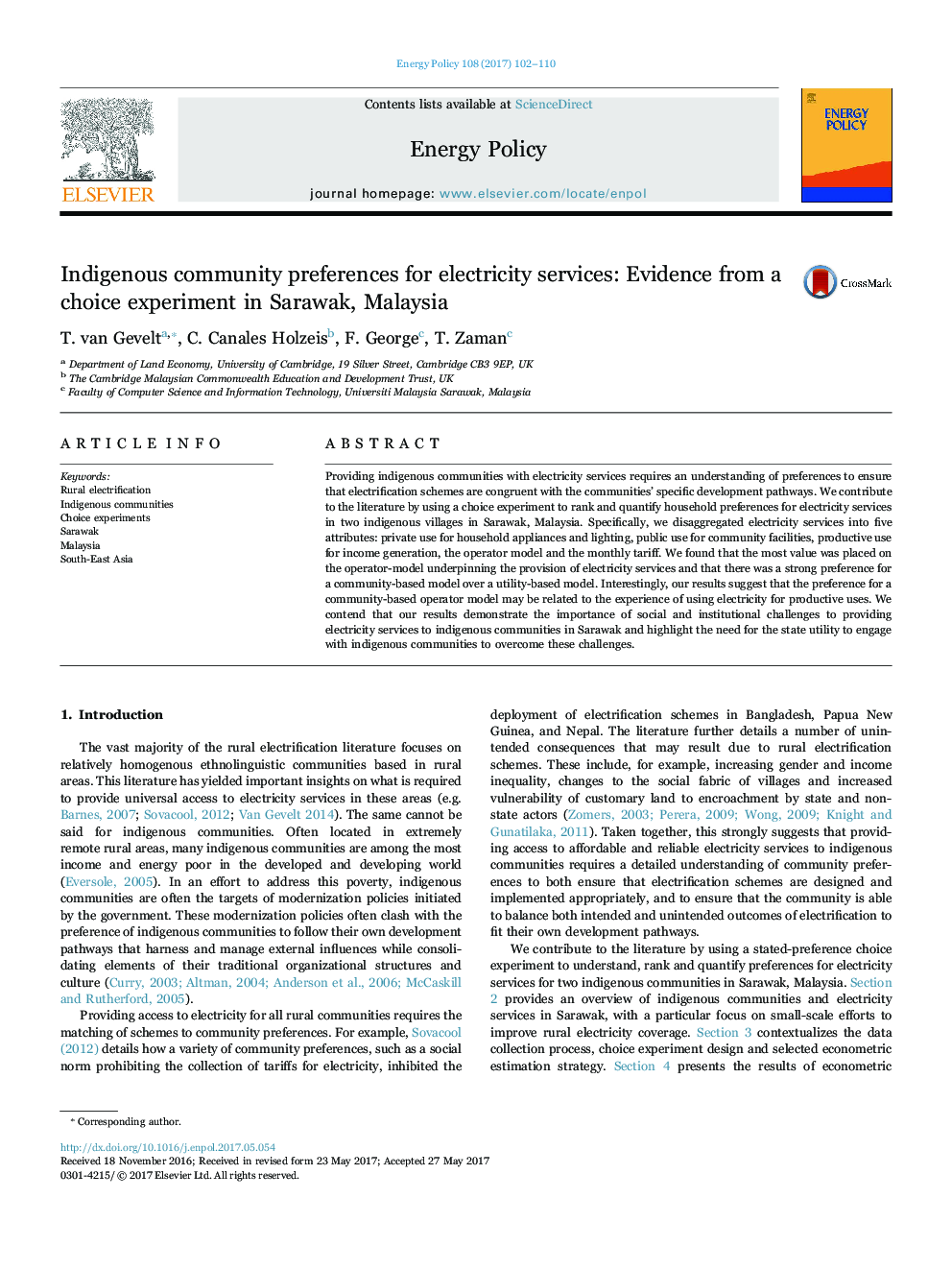| Article ID | Journal | Published Year | Pages | File Type |
|---|---|---|---|---|
| 5105616 | Energy Policy | 2017 | 9 Pages |
Abstract
Providing indigenous communities with electricity services requires an understanding of preferences to ensure that electrification schemes are congruent with the communities' specific development pathways. We contribute to the literature by using a choice experiment to rank and quantify household preferences for electricity services in two indigenous villages in Sarawak, Malaysia. Specifically, we disaggregated electricity services into five attributes: private use for household appliances and lighting, public use for community facilities, productive use for income generation, the operator model and the monthly tariff. We found that the most value was placed on the operator-model underpinning the provision of electricity services and that there was a strong preference for a community-based model over a utility-based model. Interestingly, our results suggest that the preference for a community-based operator model may be related to the experience of using electricity for productive uses. We contend that our results demonstrate the importance of social and institutional challenges to providing electricity services to indigenous communities in Sarawak and highlight the need for the state utility to engage with indigenous communities to overcome these challenges.
Keywords
Related Topics
Physical Sciences and Engineering
Energy
Energy Engineering and Power Technology
Authors
T. van Gevelt, C. Canales Holzeis, F. George, T. Zaman,
